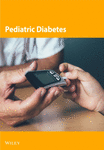The Need for Peer Support and Codesigned Services: A Qualitative Study to Understand Diabetes Education Program Needs of Adolescents With Type 1 Diabetes
Abstract
Background: Developmental challenges of adolescence, such as puberty and social pressures, exacerbate the complexity of managing type 1 diabetes (T1D) as they transition from pediatric to adult care. However, there is a paucity of codesigned, evidence-based diabetes education and support programs and services to guide adolescents through this transition.
Objective: This study aimed to explore the experiences, perspectives, facilitators, and barriers faced by adolescents with T1D in diabetes education and program services and to identify feasible approaches to support them as they transition from pediatric to adult care.
Methods: Semistructured interviews were conducted with 13 adolescents aged 13–19 years with T1D. Thematic analysis was used to understand participants’ past experiences, facilitators, barriers, and preferences regarding diabetes education programs and services.
Results: Participants highly valued the opportunity to meet with peers living with T1D and the emotional support from those interactions. Participants also highlighted the need for age-appropriate content and interactive learning experiences. Suggested gamification features were well-received, with participants emphasizing the importance of interactivity. While there was not a strong preference between virtual or in-person game formats, it was suggested that online options offered flexibility and inclusiveness regardless of physical abilities. Participants were not as enthusiastic for a one-on-one live chat compared to an online community chat, again, for the opportunity for peer support.
Conclusion: The study highlights the value that adolescents with T1D place on peer support that arises from opportunities to meet others through in-person events. It was evident that codesigning diabetes education programs and services with adolescents with T1D is key to develop tailored offerings for this population.
Conflicts of Interest
The authors declare no conflicts of interest.
Open Research
Data Availability Statement
The datasets generated in this study are available from the corresponding author upon reasonable request, with the permission of the University of Technology Sydney.




